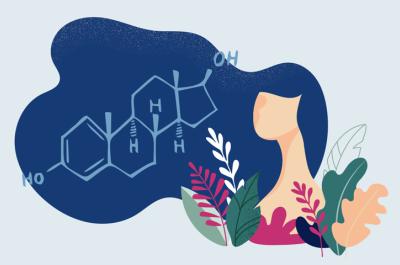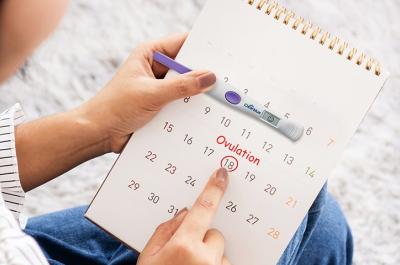What is in vitro fertilization (IVF) and how does it work?
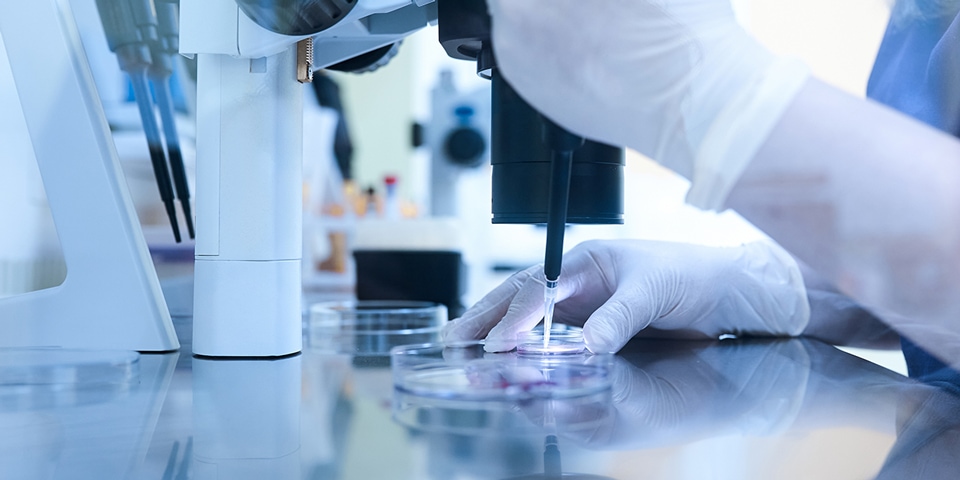
Most people don’t begin their pregnancy journey as IVF experts. Often, learning about IVF comes after months or even years of trying to conceive, when you begin to wonder about other options. While you should always discuss decisions involving fertility problems with your ob-gyn or fertility specialist, consider this a quick guide to what IVF is, what the process looks like and what to expect.
What is IVF?
IVF stands for in vitro fertilization, which means fertilization that happens outside the body.1 According to the Office on Women’s Health, it’s the most effective type of assisted reproductive technology (ART) in the U.S. as of 2023.1 ART includes all fertility treatments involving the handling of eggs and sperm.2
How does IVF work?
IVF is the process of extracting an egg from the ovary and joining it with sperm in a laboratory dish.3 As of 2023 in the U.S., the National Infertility Association advises that you consult a reproductive endocrinologist or fertility doctor before beginning the IVF process.4 To learn more about IVF and if it’s a good option for you, talk with your ob-gyn or find a professional at RESOLVE: The National Infertility Association.
What is the IVF process?
As of 2023, IVF is a multistage process,2 and every step, from stimulation to embryo transfer, must be successful in order to result in a pregnancy. According to The American College of Obstetricians and Gynecologists (ACOG), it often takes more than one cycle to work.2
Here’s the step-by-step IVF process:
- Stimulation (also called ovarian stimulation or super ovulation): Fertility drugs, such as those containing gonadotropins, are used to boost egg production.2,3,5 Throughout this time, transvaginal ultrasounds are done to examine the ovaries, and blood tests are done to check hormone levels.3
- Egg retrieval: A minor surgery called follicular aspiration is used to remove the oocytes (eggs).3,5 During this procedure (performed under sedation), a thin needle is inserted through the vagina to collect the eggs.3,5
- Embryo fertilization (also called insemination): During this step, sperm is placed with the best- quality eggs in a laboratory dish.3,5 Sometimes sperm is injected directly into the egg (intracytoplasmic sperm injection, or ICSI).2,3 The eggs and sperm are then stored in an environmentally controlled setting.3 Once any fertilized eggs divide, each cluster of dividing cells is called a blastocyst, or the early stage of an embryo.6 Staff at the laboratory will regularly evaluate and grade the blastocysts to determine which ones will most likely result in a pregnancy.6
- Embryo transfer: Five or six days after fertilization,6 one or more blastocysts are placed into the womb, via the vagina through the cervix.3,5 Pregnancy results if the blastocyst implants and grows.6 Any healthy blastocysts that are not transferred can be frozen and stored.2
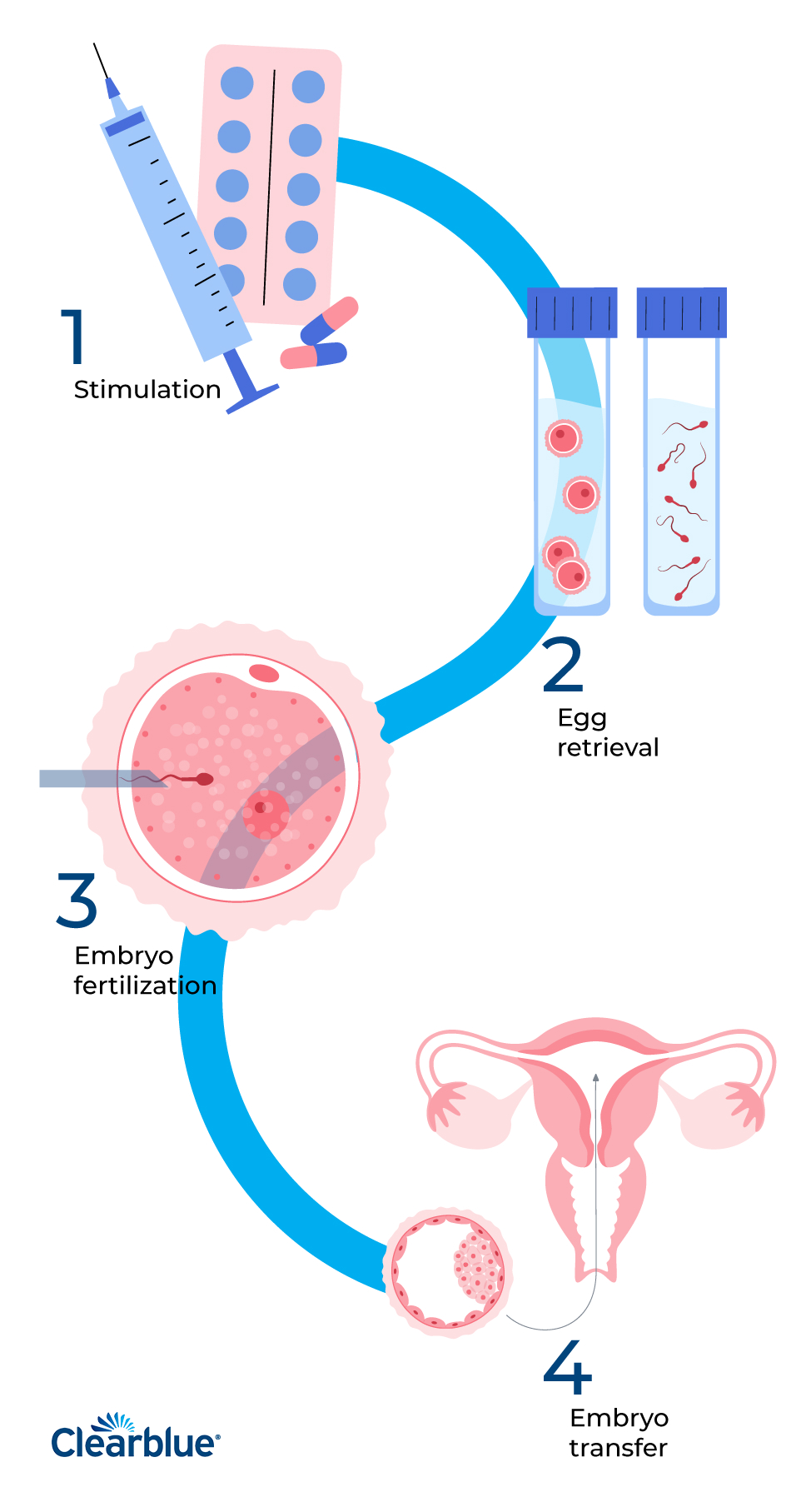
IVF timeline: How long does the IVF process take?
You will work with a fertility specialist to determine a timeline best suited for you, but here’s what you can generally expect:
- Ovarian stimulation, including the ultrasounds and bloodwork, takes anywhere from eight to 14 days.7
- Often a trigger shot (your last hormone injection) to induce ovulation is administered 36 hours before the scheduled egg retrieval.2,7
- Fertilization occurs in the laboratory the same day the eggs are retrieved.7
- The embryo(s) develop and are monitored over the next five to six days.7
- The embryo transfer takes place about three to seven days after the egg retrieval.7
- It will be time to take a pregnancy test about nine to 14 days after the embryo transfer (this time period of waiting is often referred to as the two-week wait).7
The above timeline describes a fresh embryo transfer. During a frozen embryo transfer, embryos from a previous IVF cycle or a fertilized donor egg are thawed and inserted.7 When this happens, hormones are given to help prepare the body to better accept the embryo.7 This typically involves 14 to 21 days of medication followed by about six days of injections, and two to three appointments involving ultrasounds and bloodwork.7 According to Cleveland Clinic, a frozen embryo transfer is more common in the U.S. for logistical reasons and, as of 2023, is more likely to result in a live birth.7
IVF success rates: What are the chances of pregnancy via IVF?
Preliminary data from the Centers for Disease Control and Prevention (CDC) shows that of the 326,468 ART cycles performed at 449 reporting clinics during 2020 in the U.S., about 23% of those who had IVF got pregnant and gave birth to singles or multiples.8
Additionally, according to the CDC, approximately 2% of all infants born in the U.S. every year are conceived using ART.8
What is the IVF success rate by age?
According to the Society for Assisted Reproductive Technology (SART), the IVF success rate varies by age, with the highest success rates experienced by individuals under 35. (All percentages listed are from 2021 and indicate live births using a person’s own eggs for one child.)
- Under age 35: 42%
- 35-37: 30.8%
- 38-40: 19.2%
- 41-42: 9.2%
- Older than 42: 2.8%9
It’s important to note that these percentages were higher in 2019 (for example, the percentage of live births for those under age 35 was 51%, and for those ages 35 to 37 was 38.3%).9 According to SART, the COVID-19 pandemic delayed some embryo transfers, “leading to a higher number of cycles without a transfer during the 12 months after the retrieval cycle, thereby impacting overall live birth success rates per cycle.”9
How much does IVF cost?
According to the American Society for Reproductive Medicine, the average cost of one cycle of IVF in the U.S. is $12,400.10
If the IVF process is new to you, and you’ve been trying to have a baby for a while now, thinking about what lies ahead may bring up some big feelings. Know that you’re not alone. Education doesn’t equal a decision. Learning more about all your options simply empowers you to switch things up — if you so choose — on your journey to becoming a parent.
Related Articles
Sources
- Office on Women’s Health, U.S. Department of Health & Human Services. Infertility. Updated February 21, 2021. Accessed February 26, 2023. https://www.womenshealth.gov/a-z- topics/infertility
- The American College of Obstetricians and Gynecologists. Treating infertility. Updated August 2022. Accessed February 26, 2023. https://www.acog.org/womens-health/faqs/treating- infertility
- A.D.A.M. Medical Encyclopedia. In vitro fertilization (IVF). Updated January 10, 2022. Accessed February 26, 2023. https://medlineplus.gov/ency/article/007279.htm
- RESOLVE: The National Infertility Association. The IVF process. Accessed May 31, 2023. https://resolve.org/learn/what-are-my-options/in-vitro-fertilization/the-ivf-process/
- Choe J, Shanks AL. StatPearls [Internet]. In vitro fertilization. Updated September 5, 2022. Accessed February 26, 2023. https://www.ncbi.nlm.nih.gov/books/NBK562266/
- Cleveland Clinic. Blastocyst. Updated April 29, 2022. Accessed May 31, 2023. https://my.clevelandclinic.org/health/body/22889-blastocyst
- Cleveland Clinic. IVF (in vitro fertilization). Updated March 2, 2022. Accessed February 26, 2023. https://my.clevelandclinic.org/health/treatments/22457-ivf
- Centers for Disease Control and Prevention. Assisted reproductive technology (ART). Updated February 21, 2023. Accessed February 26, 2023. https://www.cdc.gov/art/artdata/index.html
- Society for Assisted Reproductive Technology. Final national summary report. Accessed May 31, 2023. https://www.sartcorsonline.com/rptCSR_PublicMultYear.aspx?ClinicPKID=0
- American Society for Reproductive Medicine. Is in vitro fertilization expensive? Accessed February 26, 2023. https://www.reproductivefacts.org/faqs/frequently-asked-questions-about-infertility/q06-is-in-vitro-fertilization-expensive/
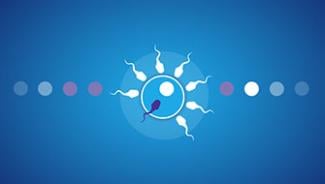
Get pregnant naturally
Ovulation tests are accurate and simple to use.
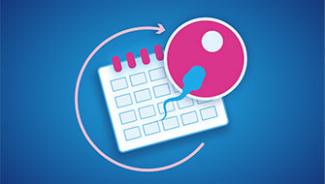
When is the best time to get pregnant?
There are only a few days each cycle, around ovulation, when a woman is fertile. Knowing these days can maximise your chance of conceiving.



